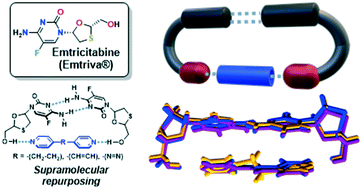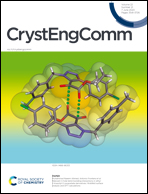Repurposing of the anti-HIV drug emtricitabine as a hydrogen-bonded cleft for bipyridines via cocrystallization†
Abstract
We report supramolecular repurposing of emtricitabine (FTC, trade name: Emtriva®), a blockbuster FDA-approved anti-HIV agent. FTC is revealed to act as a hydrogen-bonded cleft for bipyridine recognition. The supramolecular repurposing is realized by the generation of four cocrystals through liquid-assisted grinding. The clefts comprise discrete three-component assemblies sustained by a combination of hydrogen bonds and π⋯π interactions.

- This article is part of the themed collection: Introducing the CrystEngComm Advisory Board and their research


 Please wait while we load your content...
Please wait while we load your content...